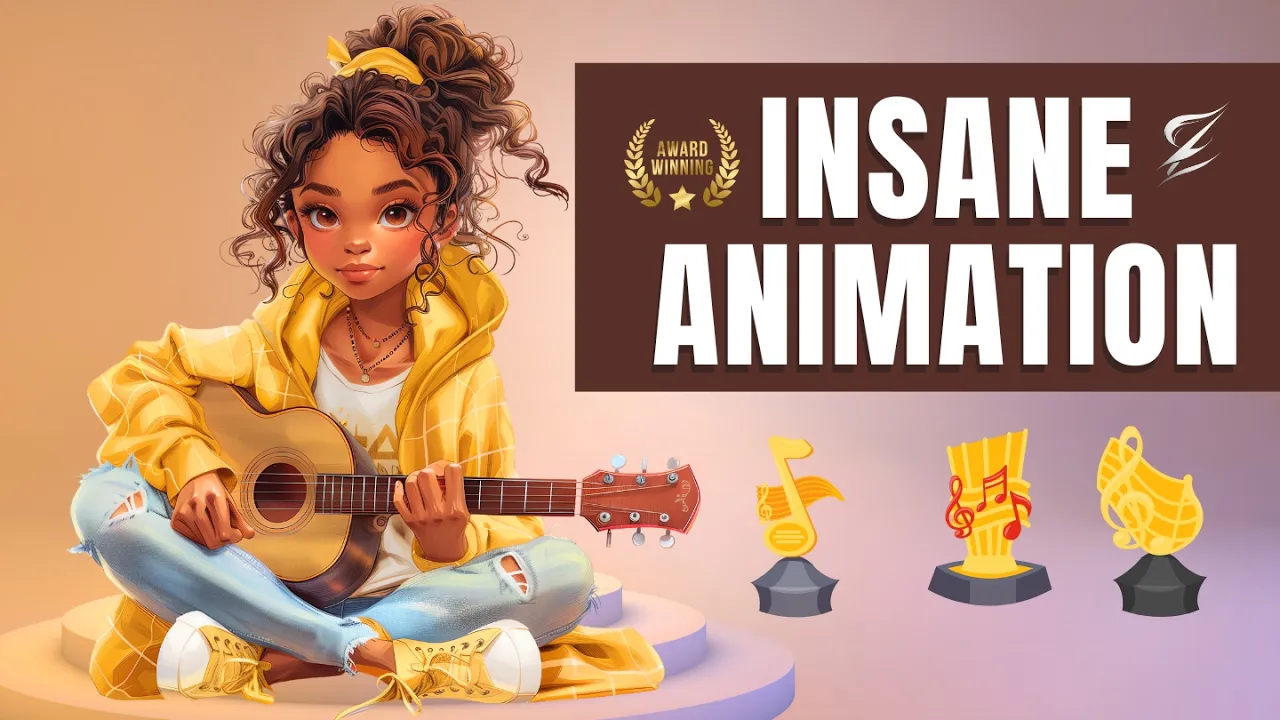AI Animation Just Got Way Easier: Dream Machine (Luma AI)
Education

Introduction
The world of animation is evolving rapidly, and with the advent of Luma AI's Dream Machine, creating animations has become significantly easier and more accessible than ever before. This article will walk you through the step-by-step process used in the creation of a captivating music video, demonstrating the incredible capabilities of modern AI tools in the field of animation and music production.
Step 1: Image Generation and Upscaling
To kick things off, the first step is generating high-quality images. For this project, MidJourney was utilized to create the images needed for the music video. After multiple iterations, I successfully generated the desired images, which included both the introduction image for the tutorial and the primary image for the music video.
The prompt used for generating the images can play a crucial role in the final output. While this tutorial won't delve deeply into the specifics of crafting prompts, if you're interested in a dedicated guide on utilizing MidJourney for image generation, feel free to leave a comment!
Once the images were created, it is vital to upscale them to ensure they have the best quality. You can easily do this through MidJourney's upscale button or by using a website like BigMonth, albeit with some limitations on daily usage due to demand.
Next, head over to the creation tool in Luma AI. Here, you can upload the generated images and describe the action you wish the image to perform. For instance, in this case, you can instruct the AI to animate the girl in the image to play her guitar and sing, generating a video clip that typically lasts around four seconds. If you require longer clips, multiple short videos can be combined later.
Step 2: Music Creation with AI
The next step involves composing music with vocals using an AI tool called Sunno. To get started on this platform, visit the Sunno website and create an account. You can explore songs created by others for inspiration or check out various music styles available on the platform.
When ready to create your own music, head back to the homepage and click on the 'Create' button. Input your song description, such as an “inspirational ballad by a 15-year-old girl about overcoming fears, featuring lyrics centered around inner strength and self-belief.” Ensure that the instrumental option is toggled off before proceeding. The music creation process uses credits assigned each month, and after exhausting them, you will need to either pay for more or wait until the next month for a reset.
Once your music tracks are created, listen to each one and select the one that resonates the most with your project. For example, one track might go: “I was lost in the dark, shadows all around me, couldn't find a spark...". After making your selection, click on the three dots to download the audio track for your computer.
Step 3: Lip Syncing Video and Compiling Clips
For the lip-syncing process, I chose to utilize a tool called Pika.ai. After setting up an account (with the option of a free plan that includes a watermark), you can upload the video clips prepared with Luma AI and the audio file from Sunno.
Precautions may be required if the video clip is shorter than the audio track, as Pika will prompt you to edit the audio length to fit. Post lip-syncing, review the video to ensure it meets your expectations before repeating this for any additional clips.
For the lip-syncing of the introductory animation, I opted for a dedicated tool called SyncLabs. After uploading audio and video files, select the syncing mode and wait for the AI to process the clip.
Once all video clips have been lip-synced, the fun begins by compiling everything using a video editing tool like CapCut. Import your clips, arrange them according to your audio track, and add any special effects or transitions to enhance the overall output.
Finally, to improve the video quality, use the upscaling tool on CapCut. Upload your final project, upscale it, and once processed, download the final video for completion.
Conclusion
The entire process highlighted demonstrates how AI technologies, like Luma AI and other tools, are revolutionizing the methods of creating animated music videos. As a creator, staying updated with these advancements ensures you remain at the forefront of the creative landscape.
For further tutorials, make sure to like and subscribe to our channel, and hit the bell notification for updates on new content. If you're curious about starting your own faceless YouTube channel, feel free to check out our tutorial video linked below.
Keywords
- Luma AI
- Dream Machine
- Animation
- MidJourney
- Image Generation
- Image Upscaling
- Sunno
- Music Production
- Lip Syncing
- Video Editing
- CapCut
FAQ
Q1: What is Luma AI's Dream Machine?
A1: Luma AI's Dream Machine is an innovative tool enabling users to create animations effortlessly with advanced camera movements and minimal distortions.
Q2: How do I generate images for my animation?
A2: You can use MidJourney to create images by inputting specific prompts and then upscale them for better quality using either MidJourney’s upscale feature or online tools like BigMonth.
Q3: What tools can I use to create music?
A3: Sunno is an excellent AI tool that allows you to create music compositions, including vocals, by describing the type of song you want to produce.
Q4: How do I lip sync my video?
A4: For lip-syncing, tools like Pika.ai and SyncLabs can be used to match your video animations with the audio tracks created.
Q5: What video editing software do you recommend?
A5: CapCut is a robust video editing platform that allows you to compile, edit, and upscale your videos effectively.

